What is Math Fact Fluency & Why it Matters
Opinions are divided on whether students should be expected to memorize their basic math facts or given timed math fact fluency assessments. While the research supports the benefits of fact fluency, many schools have pivoted toward a greater focus on higher-level math skills instead of fact practice.
I firmly believe that computational fluency, or the ability to quickly and accurately compute the answer to a given number sentence, is a cornerstone of math success and a precursor to being able to efficiently solve challenging multistep word problems. Being able to quickly and easily recall the answers to basic facts is one piece of this process.
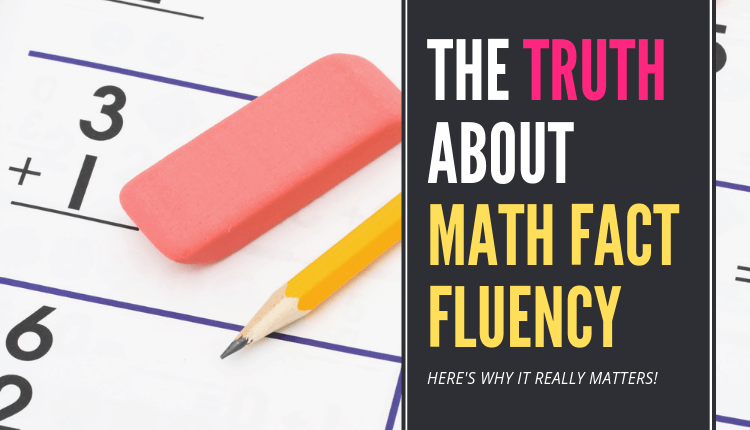
While the pendulum has currently swung in favor of those opposed to math fact practice and timed tests, I fully believe that math facts should be a core component of any math block.
But before I dig in too deep on why I hold this belief, let’s start with the basics.
What is math fact fluency?
Math fact fluency, is the ability to quickly and accurately recall the answer to basic math facts. This definition of fluency in math is pretty straightforward and is typically the result of repeated practice that results in being committed to long-term memory, allowing it to be instantaneously recalled.
According to the definition of fluency in math, students should no longer rely on strategies such as counting on their fingers or drawing models to compute.
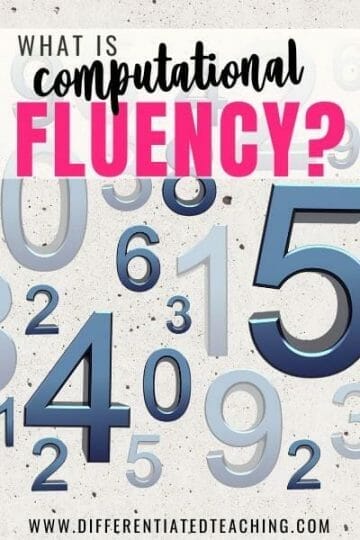
Is fact fluency the same as computational fluency?
Depending on who you ask, computational fluency can be synonymous with fact fluency or it can be something a little different. For the purpose of this article, we’re focusing on the acquisition of basic facts.
Computational fluency is the ability to quickly and accurately solve math problems – this can include basic facts or more complex computations. For example, being able to quickly get the right answer to an addition equation requiring regrouping would be a sign that a student has developed computational fluency.
The path to fact fluency
Based on the hierarchy of learning, we know that students must acquire a conceptual understanding first. For basic facts, this means using strategies like counters to compute sums and differences.
Stage 1: Skill Acquisition
At this early stage, students need to see how the solution is formed. This means they need lots of hands-on experience putting groups together for addition or taking away to subtract. Visuals are a huge help when students are at this stage of learning, which is why you commonly see pictures on primary-level math worksheets.
The goal at this initial stage prioritizes accuracy over speed.
As students progress, we introduce many different strategies to help them find the ones that are most efficient for them. Making a ten, counting on, repeated addition…the list goes on and on.
Stage 2: Fluency Building
Once students have a strong foundation and conceptually understand the computation process for basic facts, they can begin to transition from toward fluency building.
At this stage, students should begin to memorize their facts as a result of repeated practice. For some students, this begins to naturally occur through their exposure during the early phases of learning.
The goal at this stage is accurate, rapid recall of basic facts.
For other students, this requires a concerted effort and possibly some “tricks” or mnemonics. At this stage, it can be helpful to spend 5-10 minutes practicing facts. There are lots of ways teachers can build math fact fluency practice into their schedule. I’ve shared a few of my favorites here: 5 Simple Ways to Build Math Fact Fluency
As students work to build fluency, they may continue to rely on ineffective means – like counting on their fingers – when tackling more difficult facts. This is totally normal and should not be discouraged unless it is consistently causing the student to get incorrect answers. The fluency building stage is a process that occurs gradually across time.
Stage 3: Application
The major goal of the fluency building stage is moving from accurate to automatic. Once students have become fluent with their facts, they transition to the application stage. This is the point where they can quickly apply this knowledge to more difficult math challenges.
Once students are fluent, you’ll find they have less difficulty applying those skills to real-world situations and during math class.
Why is math fact fluency important?
There are numerous benefits to math fact mastery. In fact, there is a plethora of research supporting its importance.
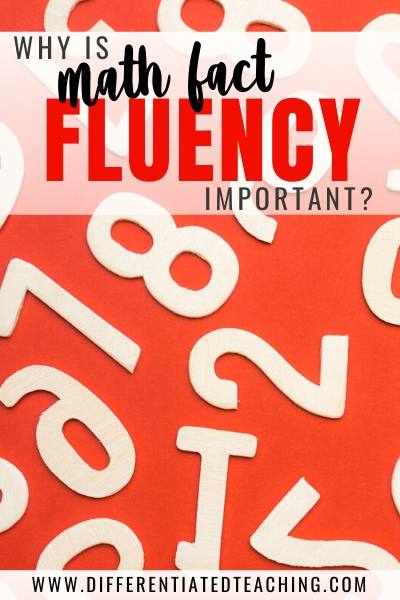
Here are a few reasons why math fact fluency is necessary for long-term success in math.
1. Fact fluency reduces cognitive load.
Research on cognitive load supports the idea that we all have a limited cognitive capacity at any given moment. In other words, we are all working within the limits of our brainpower.
Word problems, for example, require students to perform multiple cognitive processes at the same time. Students must read and comprehend the problem, break down the information given to determine what is needed to solve, compute, and identify the solution. This process becomes even more complex with multi-step problems or those with extraneous information.
While it being fluent with math facts doesn’t make word problems easy, it does reduce the number of cognitive resources needed to tackle the computation portion of the process, allowing those resources to be allocated to other components of the process.
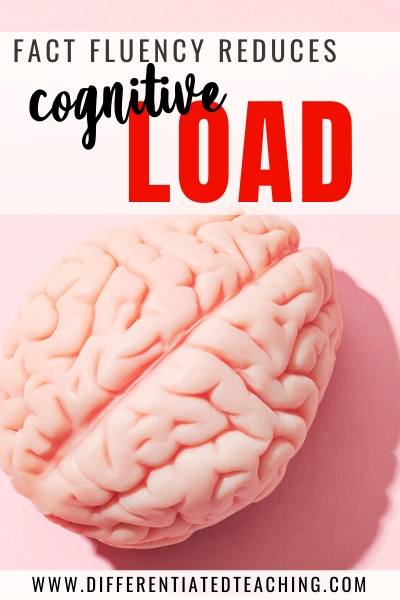
Think of it this way – if a struggling student is using all their mental energy just to solve the basic facts, what is left for problem-solving or determining whether their solution is reasonable?
This is why we see many struggling students frustrated and overwhelmed when asked to check their work. They’ve used all their resources just to get to this point, and we are asking them to go back and work it again from an empty tank.
2. Knowing math facts makes state testing easier.
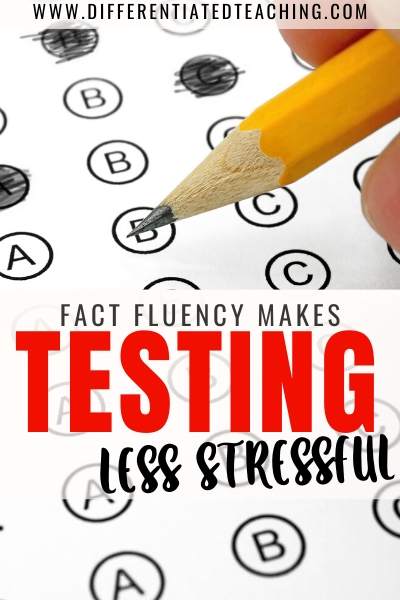
If you’ve looked at any practice tests, you’ll notice that there is a growing trend toward problems where students are asked to pick the right answer with an explanation. They look something like this:
A. 43, because if you subtract 55 from 98 you are left with 43 apples.
In this type of problem, three of the answers have computational errors. When students struggle to compute, these questions become another obstacle to good performance. For students who have developed computational fluency and know their facts, these problems are simple and require little time or mental effort.
3. Being proficient with basic math facts saves time & reduces frustration.
With the transition to the Common Core years ago, we began (or continued) introducing a plethora of different strategies to help students compute. We taught computation using number lines, adding on, skip counting, and all sorts of other techniques to help them understand HOW to compute.
Those strategies are, however, meant to be short-term bridges toward an end goal of computational fluency. They aren’t meant to be a permanent method for computing basic facts. If a student has to draw a picture or make a number line each time they need to add or multiply, it is only a matter of time before they begin to struggle to keep up.
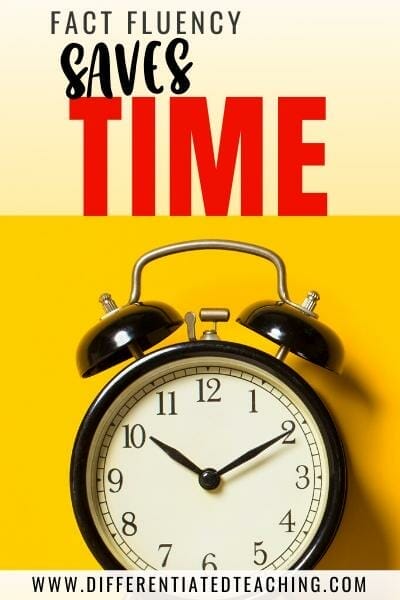
With more and more algebraic reasoning skills being pushed at elementary, students who aren’t fluent in math are more likely to develop an aversion or dislike for the subject.
The barrier to building fact fluency
There are three main factors that I commonly noticed in my classroom when it came to fact fluency issues. When I had struggling math students, they either:
- lacked number sense or struggled to subitize
- relied on inefficient or inaccurate strategies
- had too little practice with basic computation
Why we’ve moved away from memorizing math facts
Education today is a barrage of standardized assessment. I’ll say it again for those in the back – there’s WAY TOO MUCH standardized assessment in today’s classroom. When it comes to math, the majority of that testing comes in the form of word problems. Page after page of long, multi-step story problems are meant to confuse kids just as much as they are meant to figure out what they know.
As teachers, we prepare students for this by giving them repeated exposure to these problems. We fear they’ll fail if we don’t give them enough practice.
Each year we find ourselves pushed to spend more of our math block on problem-solving – even for skills just introduced. Of course, as spring approaches, this push moves from a gentle wind to a full-on, hurricane-force storm.
Some who would argue that if a child can find a way to get the answer to a math problem, that is good enough. They argue that as long as a child has a strategy, they can be good problem solvers.
While this is true for some students, if you look at the majority of struggling math students, you find the same gaps in basic skills.
They don’t know their facts.
While some can compute them, others are missing even the conceptual understanding of the foundational skills. Even those who are semi-successful in math often use inefficient strategies that take time and are mentally tiring leaving them with incomplete or partially done assignments. These students are treading water, but as the rigor increases, they are sure to begin sinking.
Strategy is a good band-aid. However, it fails to consider the big picture of the progression of mathematical skill-building. There are many fun and engaging ways to build math fact practice into our classroom routine. Technology makes this even easier.
For example, online math fact games and apps can be a great alternative. These can be done during small groups or assigned as homework. I’ve created a post with my favorites here: 30+ Digital Math Fact Games to Build Fluency
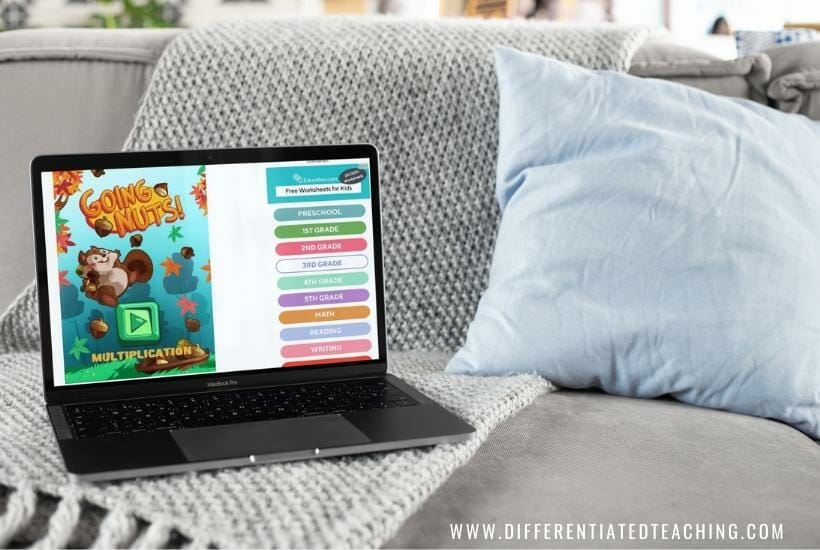
Math Fact Fluency is possible.
Should problem-solving be a major focus in math?
Absolutely. Higher-level math builds upon multi-step word problems. Elementary students need exposure to these types of problems as they work toward middle school and beyond.
However, we need to balance skill-building and application to give students the best chance for long-term success.







